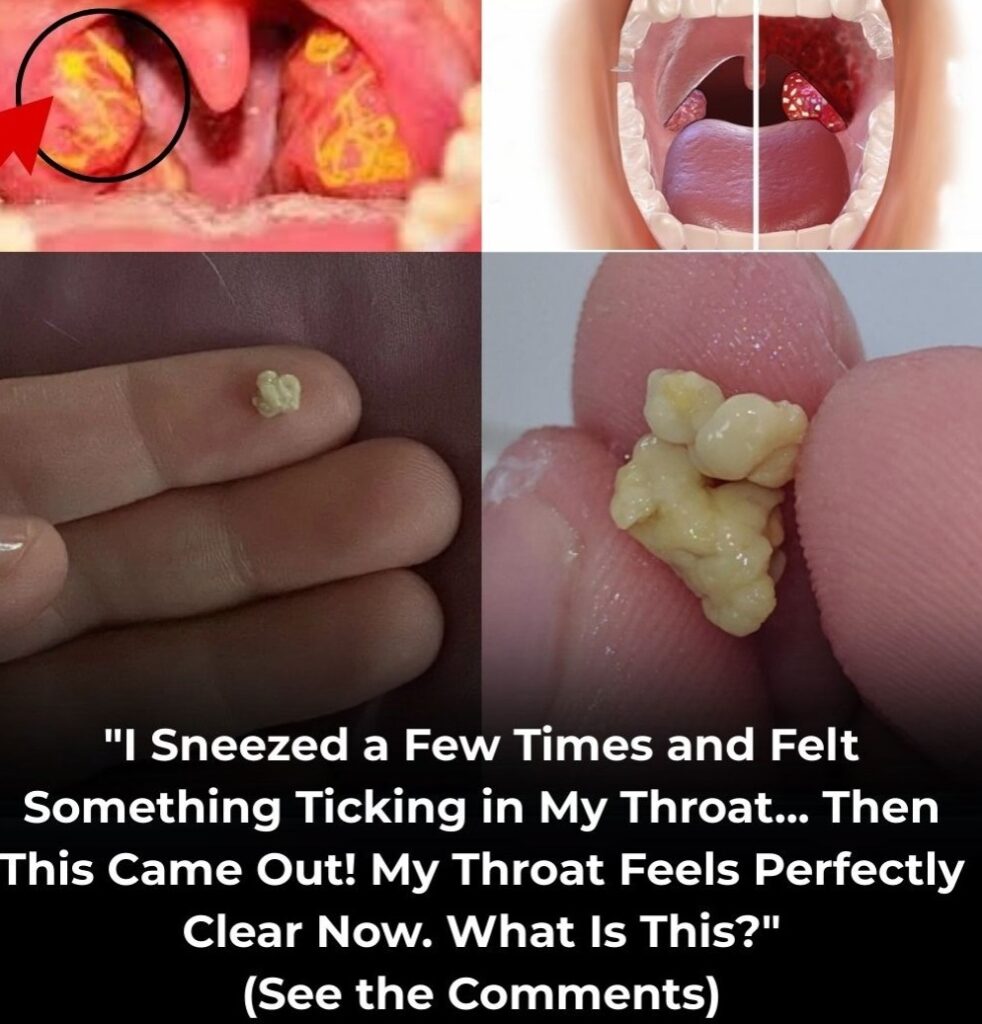
Have you ever looked in the mirror, opened your mouth wide, and noticed something strange near the back of your throat — small white or yellowish lumps stuck to your tonsils ?
You’re not alone. These little bumps are more common than you might think, and while they may look alarming at first, they’re often harmless. Still, it’s important to understand what causes them and whether they could signal something more serious.
In this article, we’ll break down:
What these white or yellow balls on the tonsils are
The most common causes
When to see a doctor
Natural remedies and treatment options
And how to monetize this type of high-interest health content
Let’s dive into the facts behind this surprisingly common issue.
What Are Those White or Yellow Balls on the Tonsils?
The white or yellow bumps you may notice lodged in your tonsils are commonly known as tonsil stones (or tonsilloliths ). These small, calcified formations develop in the crevices of the tonsils and can vary in size from tiny specks to large pea-sized clusters.
They’re usually made up of:
Bacteria
Dead cells
Mucus
Food particles
Calcium deposits
Over time, these materials get trapped in the folds of the tonsils and harden, forming the characteristic white or yellowish lumps you might spot.
Common Causes of Tonsil Stones
Tonsil stones form when debris gets trapped in the natural pockets and crypts of the tonsils . Here are the most common causes:
1. Chronic Tonsillitis
Recurring inflammation of the tonsils creates more surface area for debris to collect, increasing the risk of stone formation.
2. Poor Oral Hygiene
Failing to brush and floss regularly allows bacteria and food particles to build up, especially in the back of the throat.
3. Post-Nasal Drip
Excess mucus from allergies, sinus infections, or colds can drip down the back of the throat and mix with bacteria, contributing to tonsil stone development.
4. Dry Mouth
A dry environment encourages bacterial growth and makes it easier for debris to stick around.
5. Large Tonsil Crypts
Some people naturally have deeper folds and crevices in their tonsils, making them more prone to trapping material that leads to stones.
6. High Dairy Intake
Dairy products like milk and cheese can increase mucus production and contribute to plaque buildup on the tonsils.
Symptoms of Tonsil Stones
While some people never feel any symptoms, others experience:
Bad breath (halitosis) – often the most noticeable sign
Sore throat or irritation
Feeling like something is stuck in the back of your throat
Difficulty swallowing
Ear pain (due to shared nerve pathways)
Visible white or yellow spots on the tonsils
If you’ve experienced any of these symptoms, there’s a good chance tonsil stones might be the culprit.
Are Tonsil Stones Dangerous?
In most cases, tonsil stones are not dangerous — just annoying. However, larger stones or chronic cases can lead to complications such as:
Persistent bad breath
Tonsil swelling
Recurring sore throats
Infection or abscesses
If you’re experiencing frequent or painful stones, it may be worth seeing an ENT specialist.
How to Get Rid of Tonsil Stones
Here are several safe and effective ways to remove tonsil stones at home or with professional help:
1. Gargle with Salt Water
Salt water helps loosen the stones and reduce inflammation. Gargle several times a day, especially after meals.
2. Use a Cotton Swab or Toothbrush
Gently press on the area around the stone with a cotton swab or soft-bristled toothbrush to dislodge the stone.
3. Irrigation with a Water Flosser
Using a low-pressure oral irrigator (like a Waterpik) can help flush out debris from the tonsil crypts.
4. Stay Hydrated
Drinking plenty of water keeps your mouth moist and reduces bacterial buildup.
5. Practice Good Oral Hygiene
Brushing your tongue and using mouthwash can reduce bacteria that contribute to stone formation.
6. Visit an ENT Specialist
For persistent or painful stones, a doctor can remove them professionally or recommend long-term solutions like laser resurfacing or even tonsillectomy in extreme cases.
When to See a Doctor
While many tonsil stones are harmless, you should consider seeing a healthcare provider if you experience:
Frequent recurrence of stones
Severe pain or difficulty swallowing
High fever or swollen tonsils
Signs of infection (redness, pus, or ear pain)
Persistent bad breath despite good hygiene
An ENT (ear, nose, and throat) specialist can determine if you need more advanced treatment or removal.
️ How to Prevent Tonsil Stones
Prevention starts with reducing the conditions that allow stones to form. Try these strategies:
Brush and floss daily
Use alcohol-free mouthwash
Stay hydrated
Avoid dairy before bedtime
Quit smoking (reduces saliva flow and increases debris buildup)
Consider a tonsillectomy if stones are chronic and bothersome
For those who struggle with recurring issues, tonsil crypts can be reduced through procedures like coblation or laser cryptolysis .
Tonsil Stones vs. Strep Throat vs. Other Conditions
It’s easy to confuse tonsil stones with other throat-related issues. Here’s how to tell the difference:
If in doubt, always consult a healthcare provider for accurate diagnosis.
Final Thoughts
White or yellow balls on the tonsils are usually tonsil stones — benign accumulations of debris and bacteria that form in the crevices of the tonsils. While they can be uncomfortable and unsightly, they’re typically not dangerous and can often be managed with simple lifestyle changes.